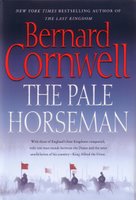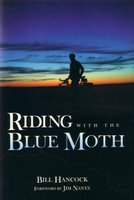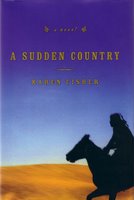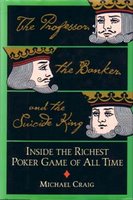 31. The Pale Horseman, Bernard Cornwell. Fiction, 4-2, p. 346
31. The Pale Horseman, Bernard Cornwell. Fiction, 4-2, p. 346 Scroll down the page or use the handy links on the right and find my post about Bernard Cornwell’s The Last Kingdom. What I said about that book applies here.
It’s an entertaining read. One of those books that entices you to trot out words like rollicking, which I used for The Last Kingdom, and probably shouldn’t use again, although it’s apt.
I do have one burgeoning concern about The Last Kingdom and A Pale Horseman, however. They are the first two books in a series and Cornwell is a prolific writer. I may not fully comprehend what I’ve let myself in for.
 32. Nabokov’s Butterfly, Rick Gekoski. Books on Books, 4-4, p. 240
32. Nabokov’s Butterfly, Rick Gekoski. Books on Books, 4-4, p. 240
I love this book. It’s a collection of 20 vignettes on major 20th Century books, ranging from Lolita to Harry Potter. That is quite a range, come to think of it.
I don’t suppose everyone will fall as deeply in love with Nabokov’s Butterfly as I did, but if you’re a reader or a collector, I can’t understand not being smitten at some level.
Gekoski’s book is especially entertaining when he’s sharing insight into the book trade (J.K. Rowling received an advance of $2,700 for the first Harry Potter novel) or when he’s actually bought and sold the book in question as with Graham Greene’s inscribed copy of Lolita.
I have only one peeve with Nabokov’s Butterfly and that has to do with the publisher (Carroll & Graf) not Mr. Gekoski. In England, the book was published under the title of Tolkien’s Gown. What was wrong with that title, I wonder? Did they think we did not know who Tolkien was? Or that we would be not be interested in reading about his gown? As Vonnegut would say, “So it goes.”
Under any title, Nabokov’s Butterfly is interesting, education and entertaining and it’s all about books – can’t ask for more than that.
 33. Hell to Pay, George Pelecanos. Mystery, 4-5, p. 344
33. Hell to Pay, George Pelecanos. Mystery, 4-5, p. 344
I noticed the ad in USA Today asks, “Have you read Pelecanos yet?” Good question. If not, why not?
George Pelecanos is one of the finest practitioners of the thriller today. He ranks with Michael Connelly, Ian Rankin and Robert Crais. Nuff said.
I thoroughly enjoyed this book. One interesting note, Pelecanos’ early works were very dark, noir-ish efforts in which everyone was booze-soaked and died in the end. Hell to Pay is hopeful, forward looking. I think Pelecanos is an idealist, who truly loves his hometown of Washington, D.C.
As with all his books, Washington is a major character in Hell to Pay. Not the D.C. most people know. The Mall. The Capitol. The Monuments. But the real Washington, D.C., of neighborhoods where people live, and die.
Have you read Pelecanos? You really, really should.
 39. The Promise of Happiness, Justin Cartwright. 4-23, p. 306
39. The Promise of Happiness, Justin Cartwright. 4-23, p. 306 “This is family. In the family you are a certain kind of person. Your mother, my mother in particular, piles one half-truth about your character on another until she has built up a whole structure, a fabricated person. It begins in small ways: you are untidy or reliable or good with figures or you each too fast; you’re frightened of frogs, you hold your pen in the wrong way, and then these threads are woven into the family tapestry, a sort of
“This is family. In the family you are a certain kind of person. Your mother, my mother in particular, piles one half-truth about your character on another until she has built up a whole structure, a fabricated person. It begins in small ways: you are untidy or reliable or good with figures or you each too fast; you’re frightened of frogs, you hold your pen in the wrong way, and then these threads are woven into the family tapestry, a sort of  The qualification is reserved for Colson Whitehead’s Apex Hides the Hurt. It’s a quirky book – something Whitehead specializes in. If I didn’t like it, I would have said it was odd.
The qualification is reserved for Colson Whitehead’s Apex Hides the Hurt. It’s a quirky book – something Whitehead specializes in. If I didn’t like it, I would have said it was odd.










